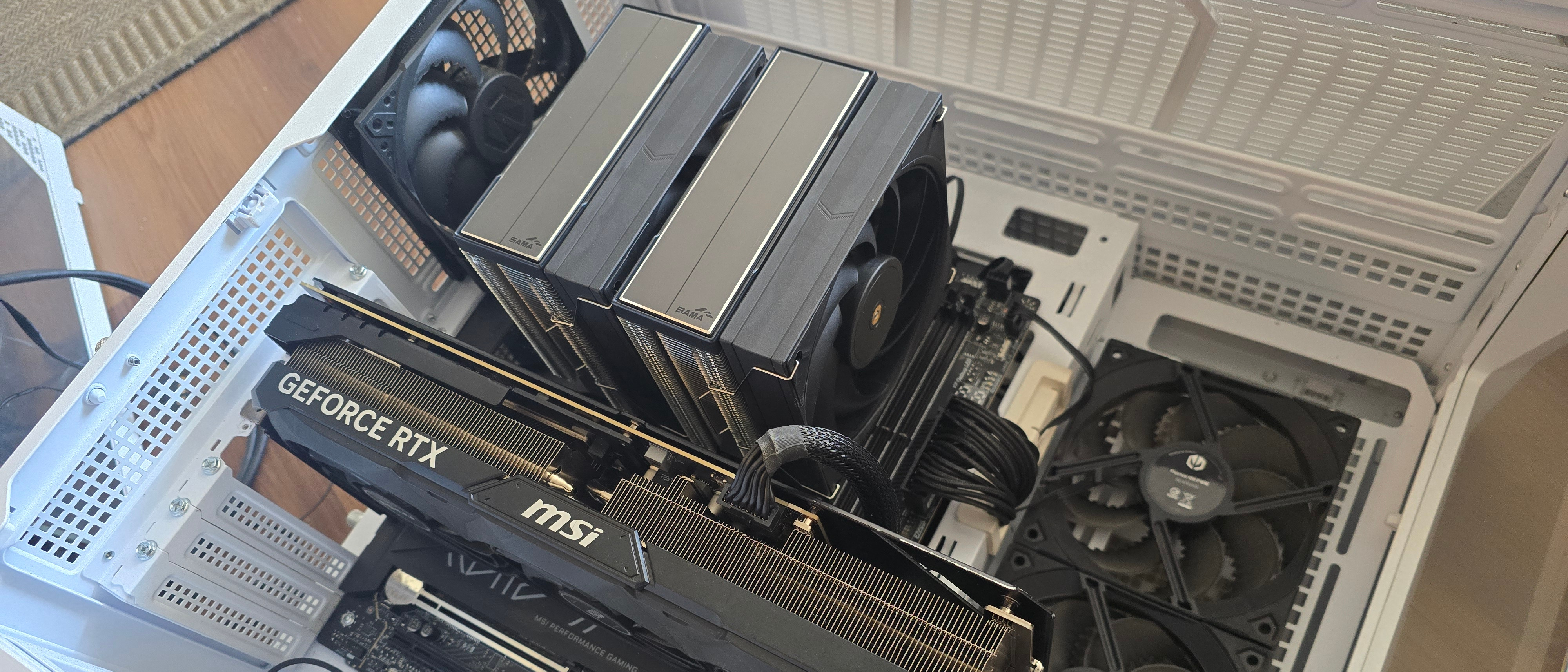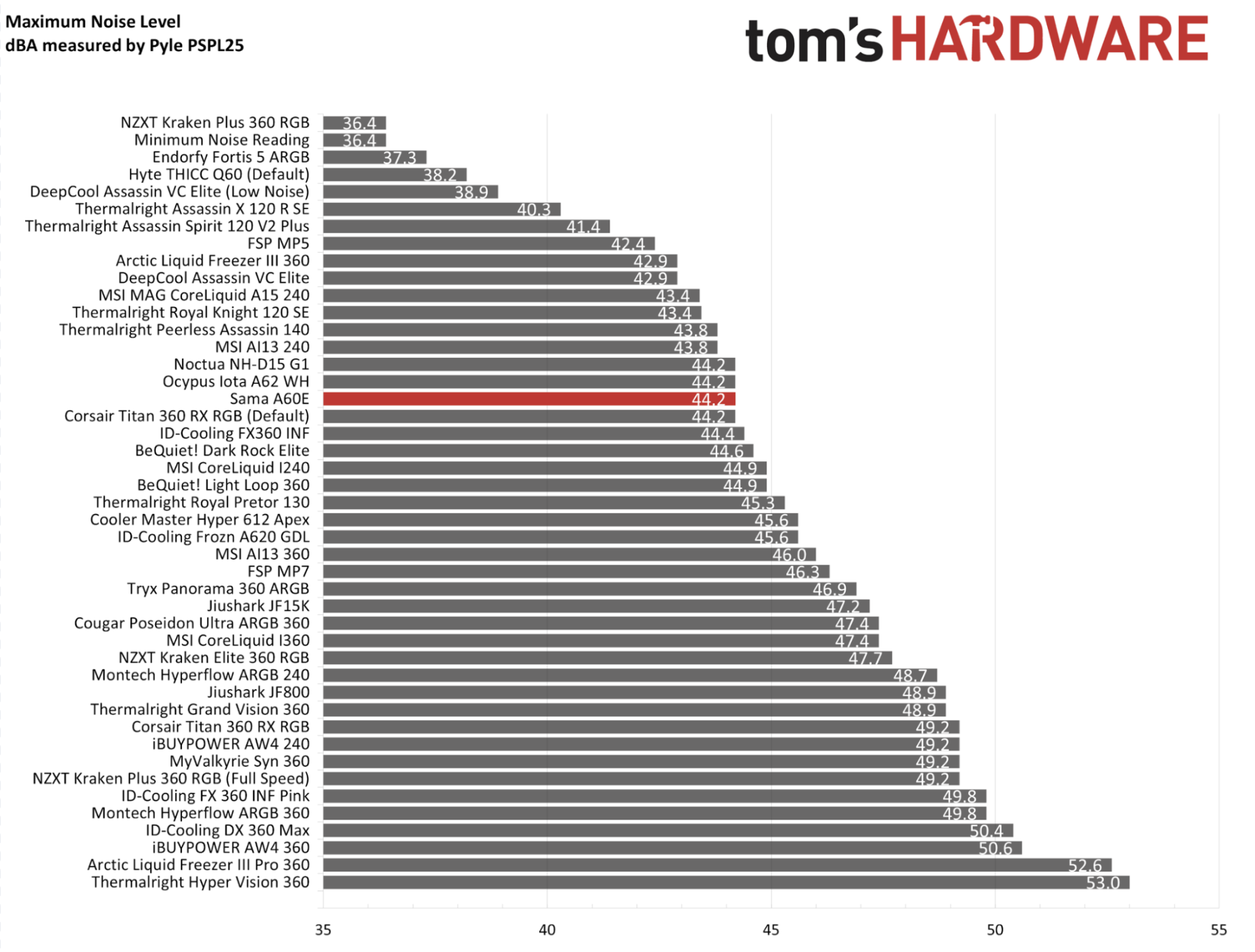Tom's Hardware Verdict
Sama’s A60E is a traditional dual-tower air cooler with an old-school black-and-metal aesthetic. It performs well enough, while mostly keeping quiet. But it could use a price cut to help it stand out against better-known competitors.
Pros
- +
Low noise levels in common situations
- +
Performs well with Intel CPUs
- +
Included Freezee thermal paste performs very well
Cons
- -
Noise-normalized performance could be better
Why you can trust Tom's Hardware
If you’ve never heard of SAMA, you’re not the only one. The company was established in 2003 as an OEM, but has recently rolled out its own lineup of computer hardware in the U.S. and elsewhere, including cases, power supplies, air coolers, and liquid coolers. The company announced several products at Computex 2025, including the focus of today’s review, the Sama A60E air cooler.
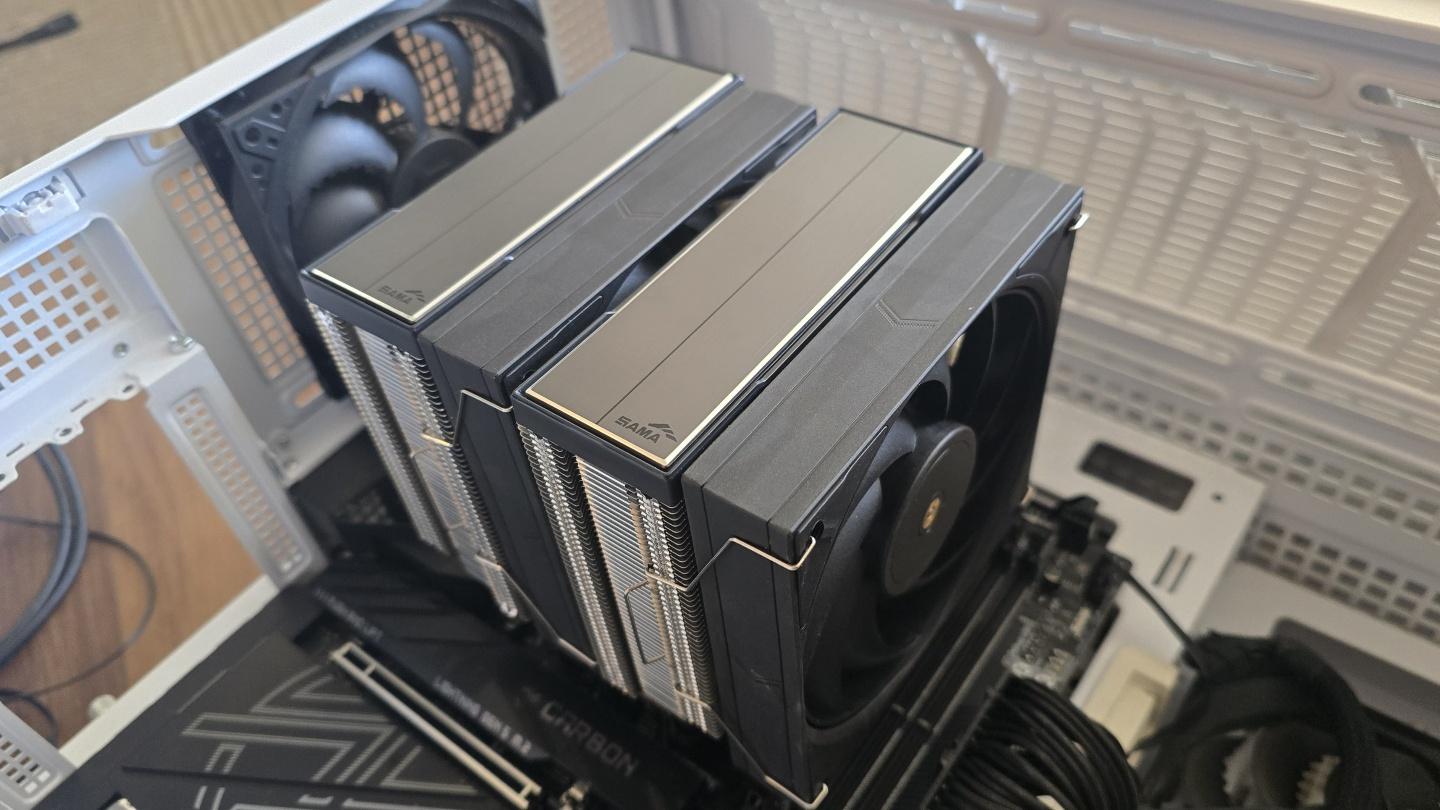
Sama’s A60E is a dual-tower air cooler with a traditional silver and black aesthetic, which should appeal to many enthusiasts. There is a version of this cooler with ARGB, if lighting is a priority for you. Will this new cooler make our list of best CPU coolers on the market? We’ll first go over the features, then get to the benchmarks with AMD and Intel CPUs, so you can determine if this cooler is right for you.
Cooler specifications
Cooler | Sama A60E |
Colors | Black - A60B Black and Silver – A60E White – A60W Black/ Silver and ARGB – A60L |
MSRP | $59.99 |
Lighting | None (ARGB version is available) |
Warranty | 3 years |
Socket Compatibility | Intel Socket LGA 1851/1700/1200/115x AMD AM5 / AM4 |
Radiator Dimensions | 142.5 (L) x 124 (W) x 156.5mm (H) |
Maximum TDP (Our Testing) | 244W with Intel Core i7-14700K 232W with AMD’s Ryzen 9 9950X3D |
Packing and included contents
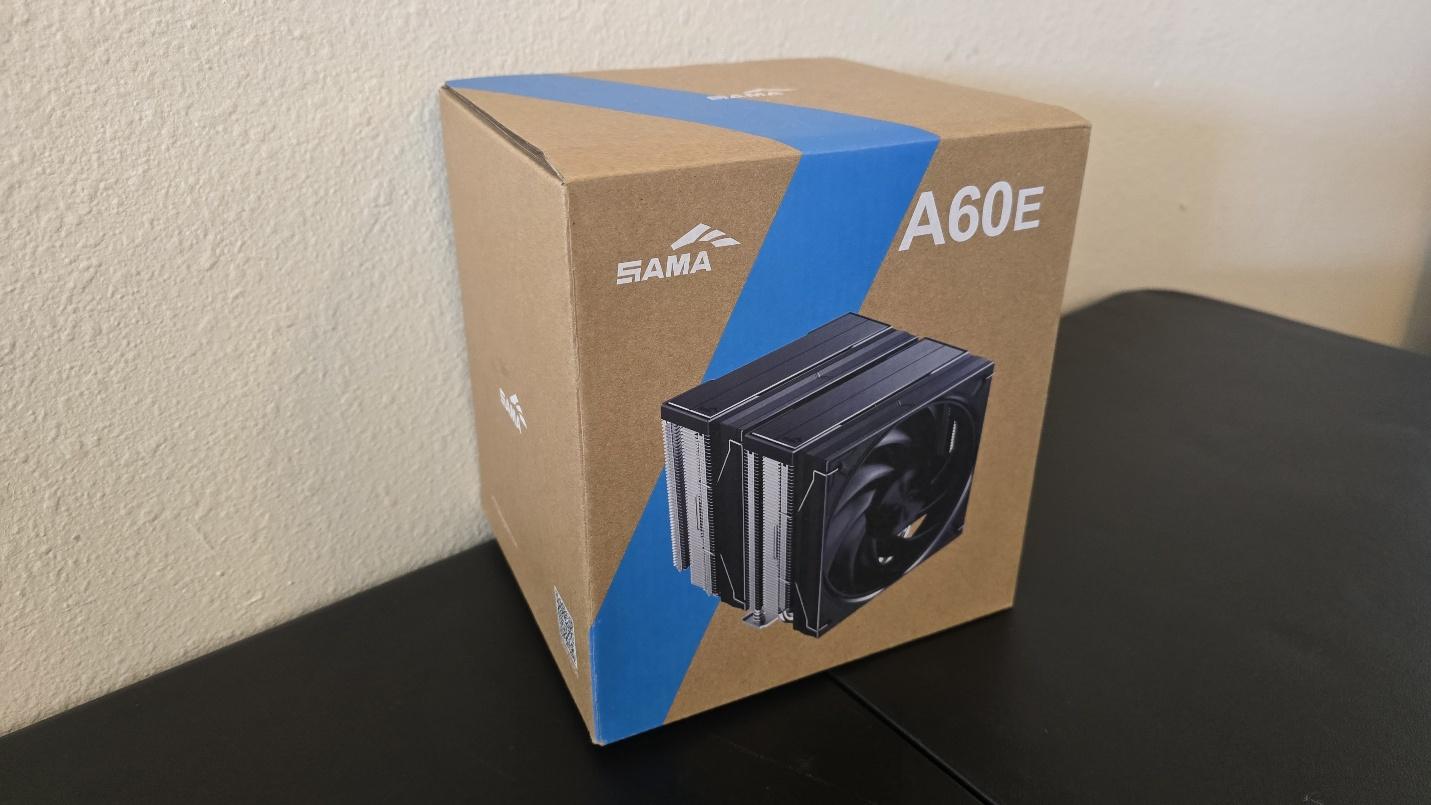
The packaging for the cooler is cardboard brown, with the cooler’s image printed on the front.
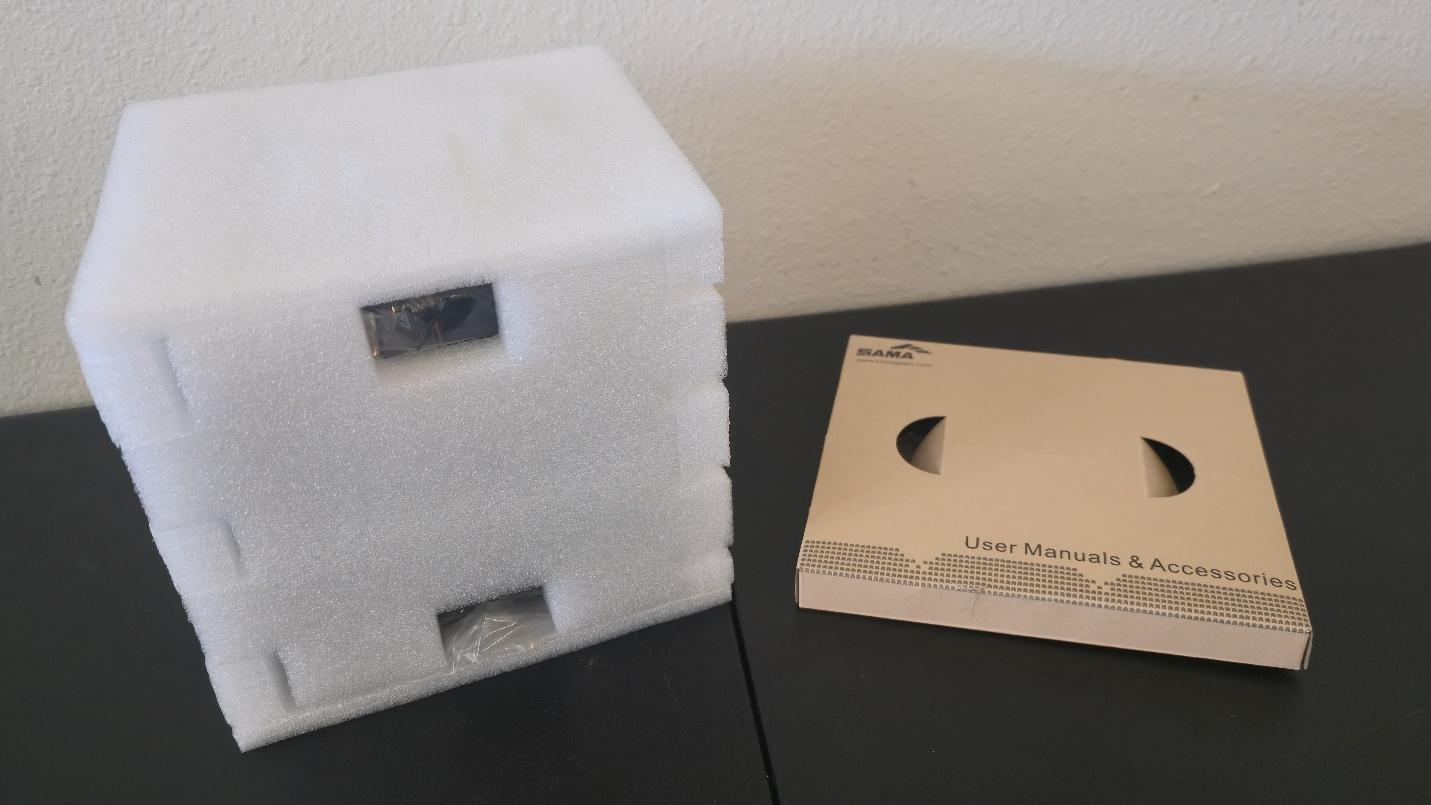
The heatsink is protected with molded foam, plastic, and cardboard cutouts.
Included in the box are the following:
- Dual-tower heatsink
- Two 120mm fans
- Installation manual
- Sama sticker
- Mounting accessories for Intel and AMD platforms
- Freezee thermal grease
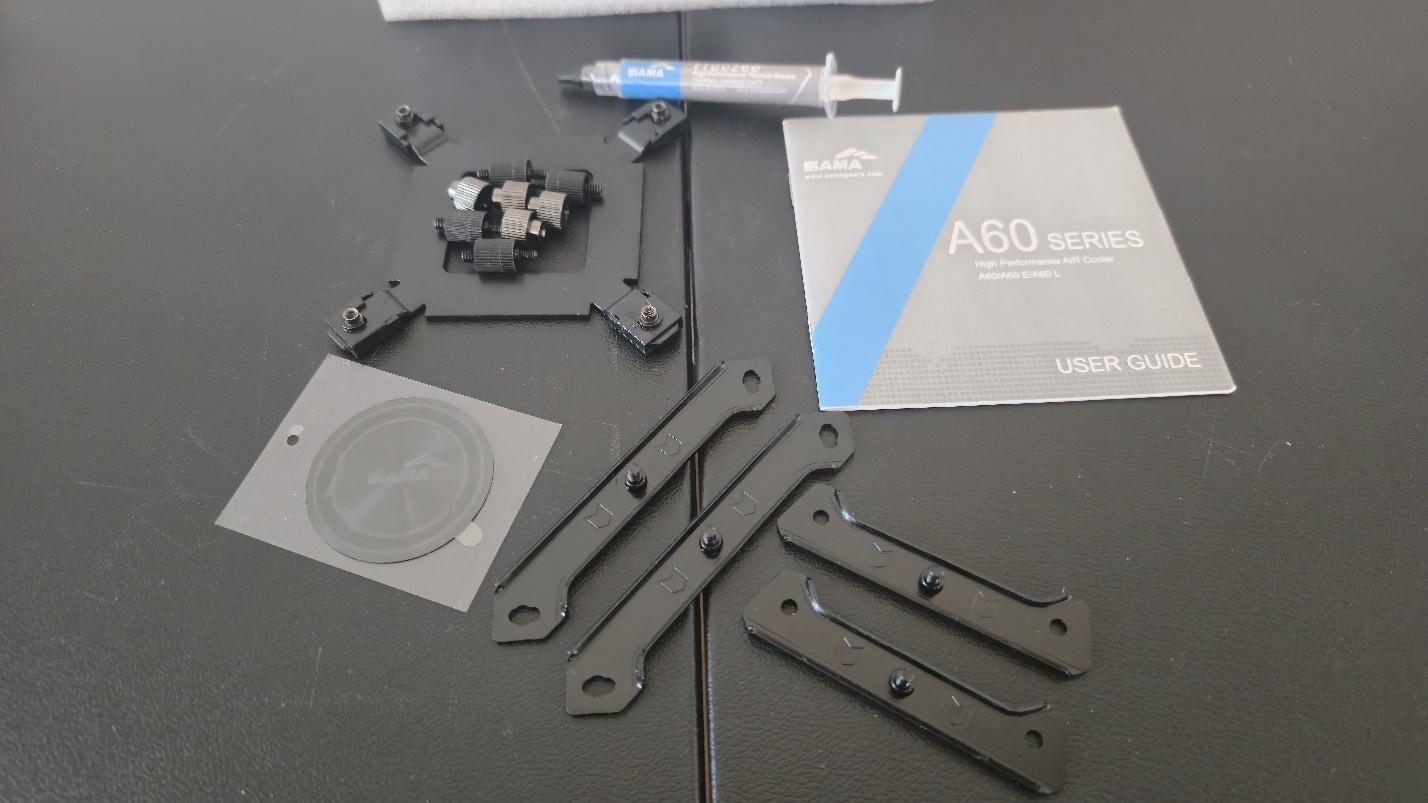
Features of Sama’s A60E air cooler
▶ Dual-tower heatsink
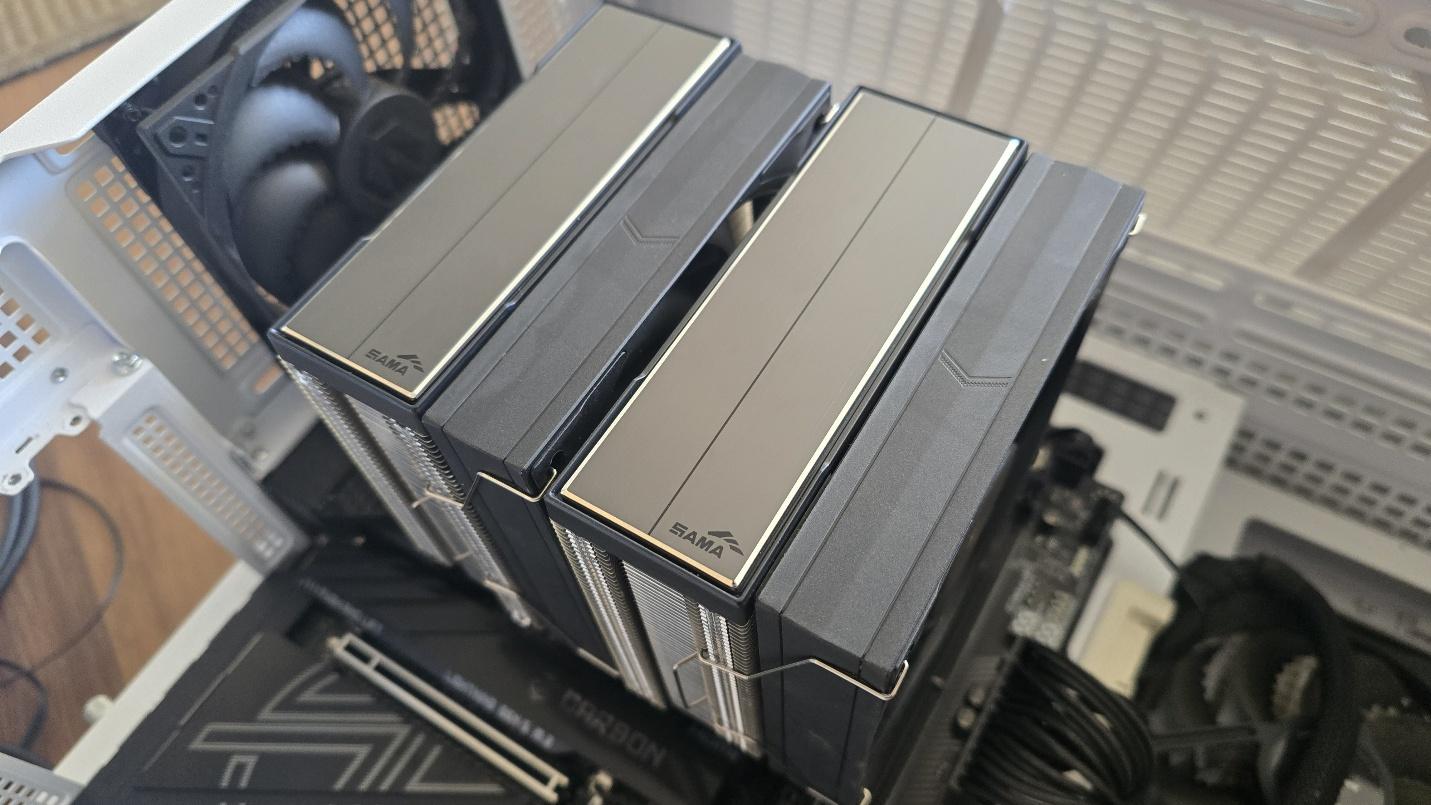
The A60E has a traditional dual-tower heatsink, with black fans. There is no ARGB lighting, though a version of this cooler with ARGB fans is available. The design of the intake and exhaust fins is shown below.
Get Tom's Hardware's best news and in-depth reviews, straight to your inbox.
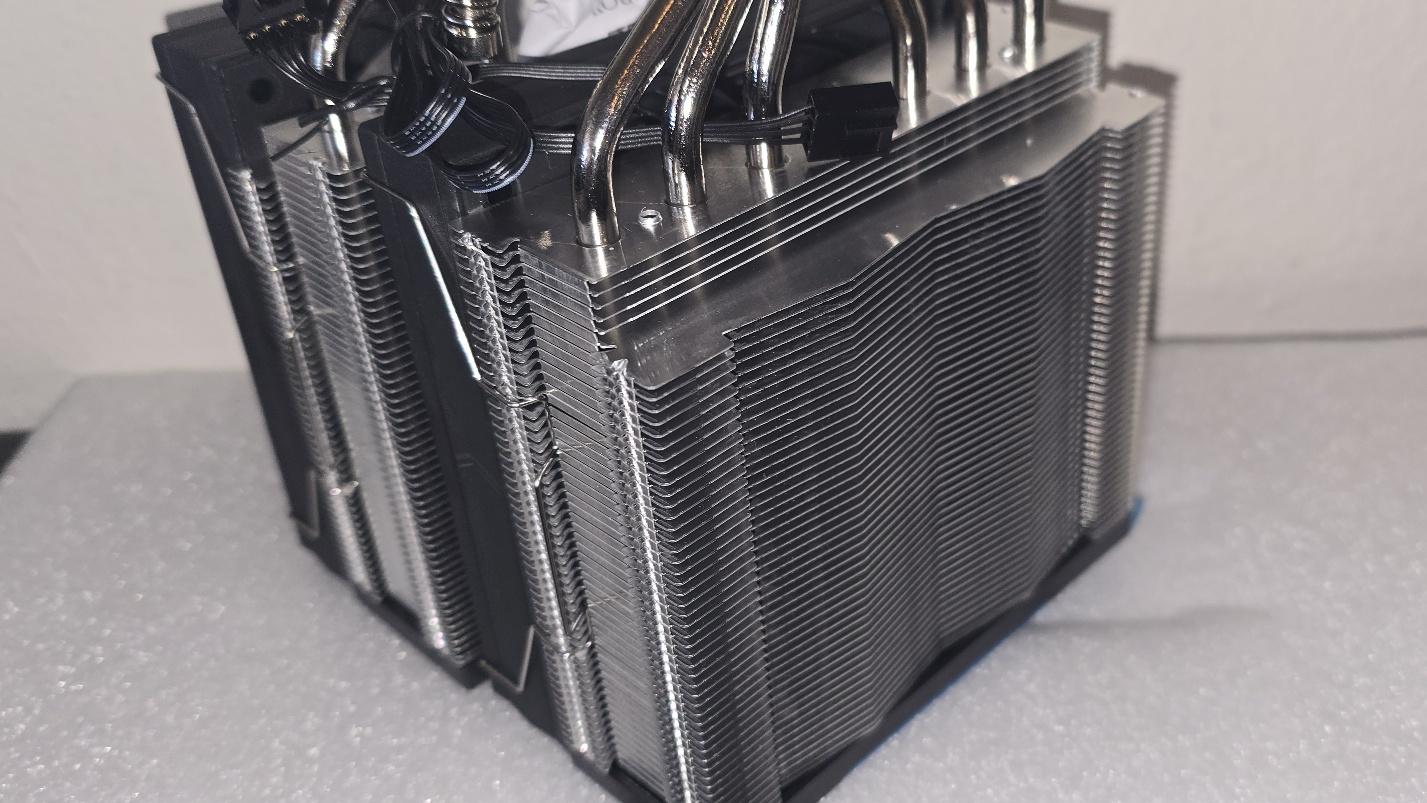
▶ Six copper heatpipes
Like most higher-end dual-tower air coolers on the market, the A60E incorporates six copper heatpipes to move heat from the CPU block and into the fins of the heatsink.
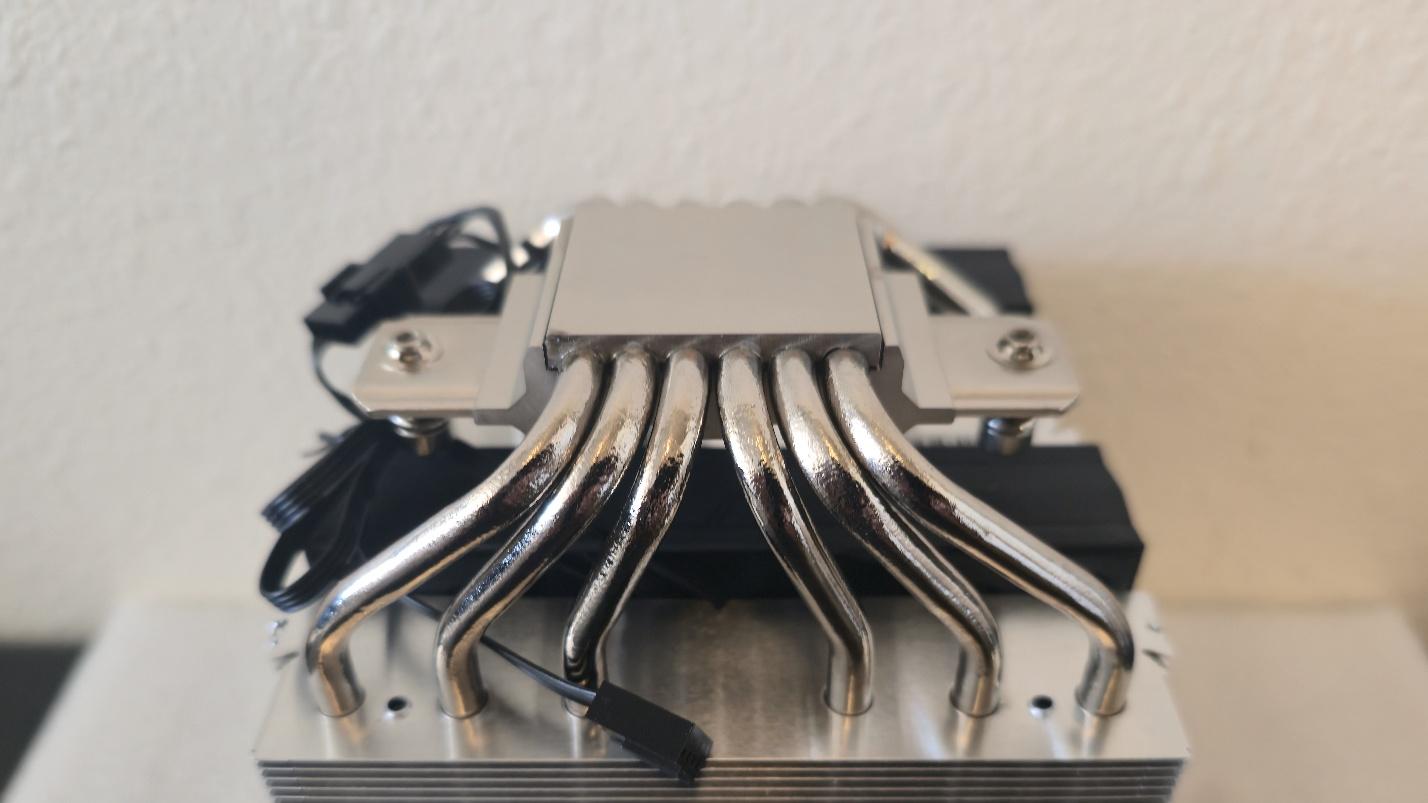
▶ Etched Metal aesthetic
This cooler sports a black and metal aesthetic, which should appeal to those wanting an “old school” look without ARGB bling. The tops of the cooler’s heatsink are etched metal plates, with Sama’s logo on the side.
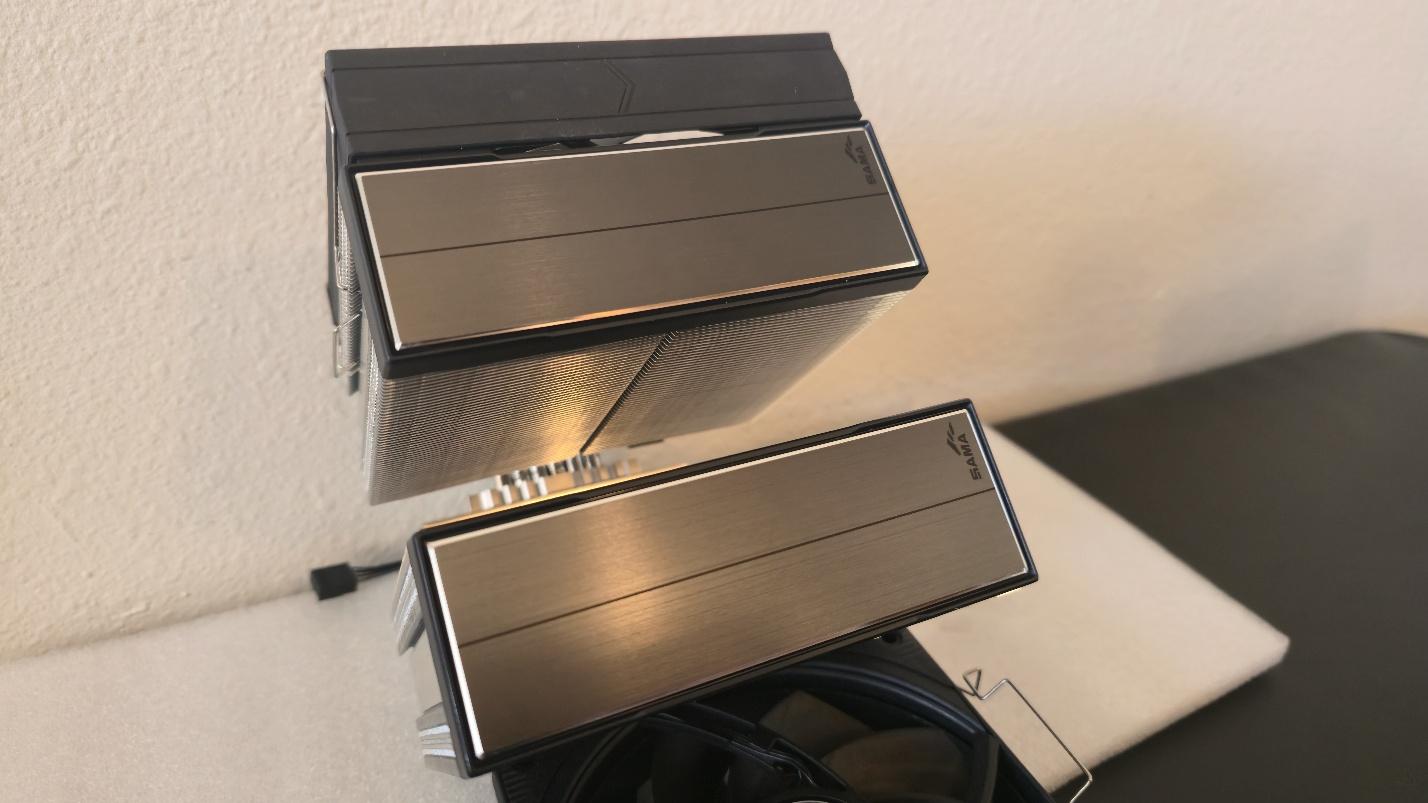
▶ Two 120mm fans
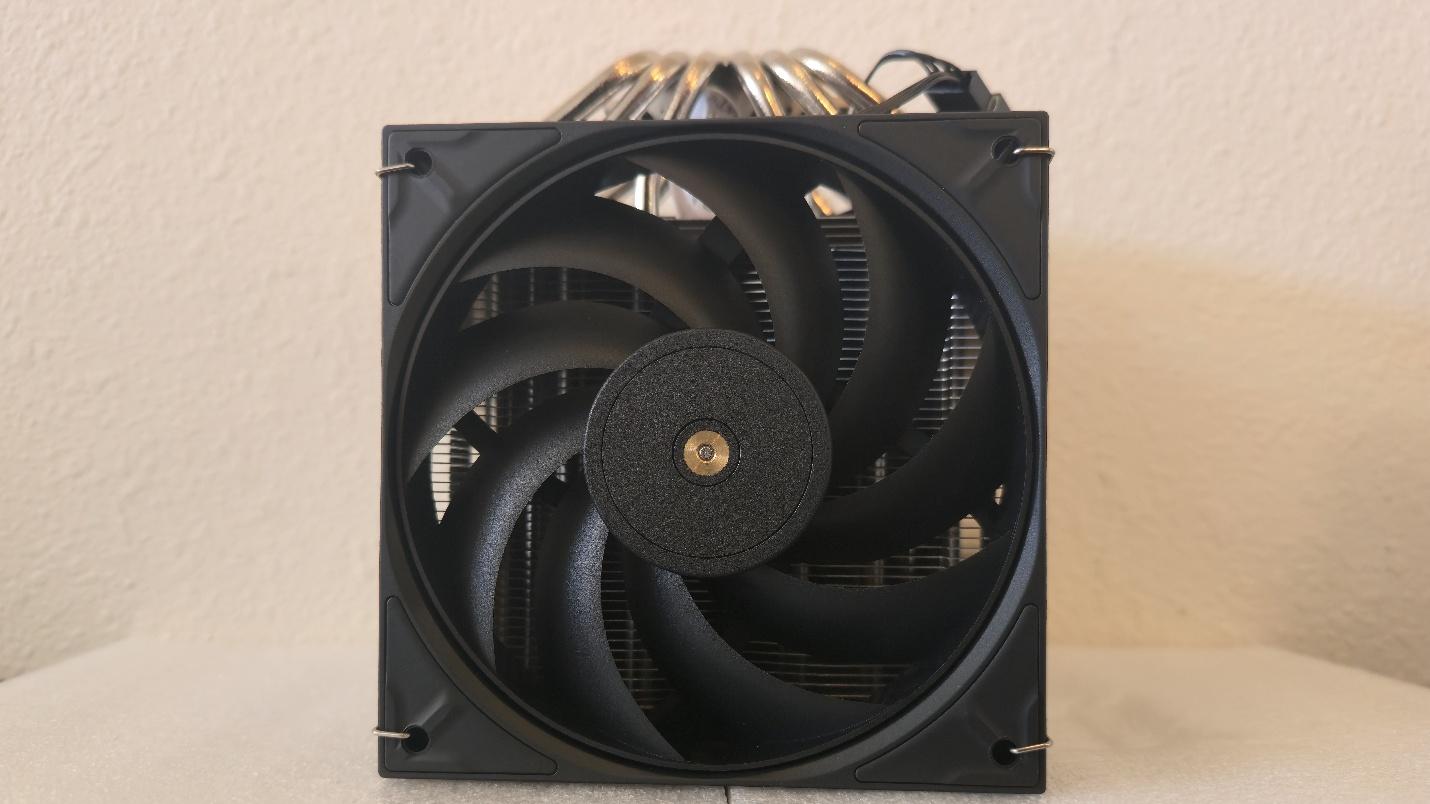
Included with the A60E are two 120mm fans, which are solid black. The technical specifications are listed below.
Size (L x W x D) | 120mm x 120m x 25mm |
Bearing | Hydro Bearing |
Fan Speed | 800-2200 RPM ±10% |
Air Pressure | Up to 2.7 mmH2O |
Airflow | Up to 78 CFM |
Life expectancy | Unlisted |
▶ Freezee thermal paste
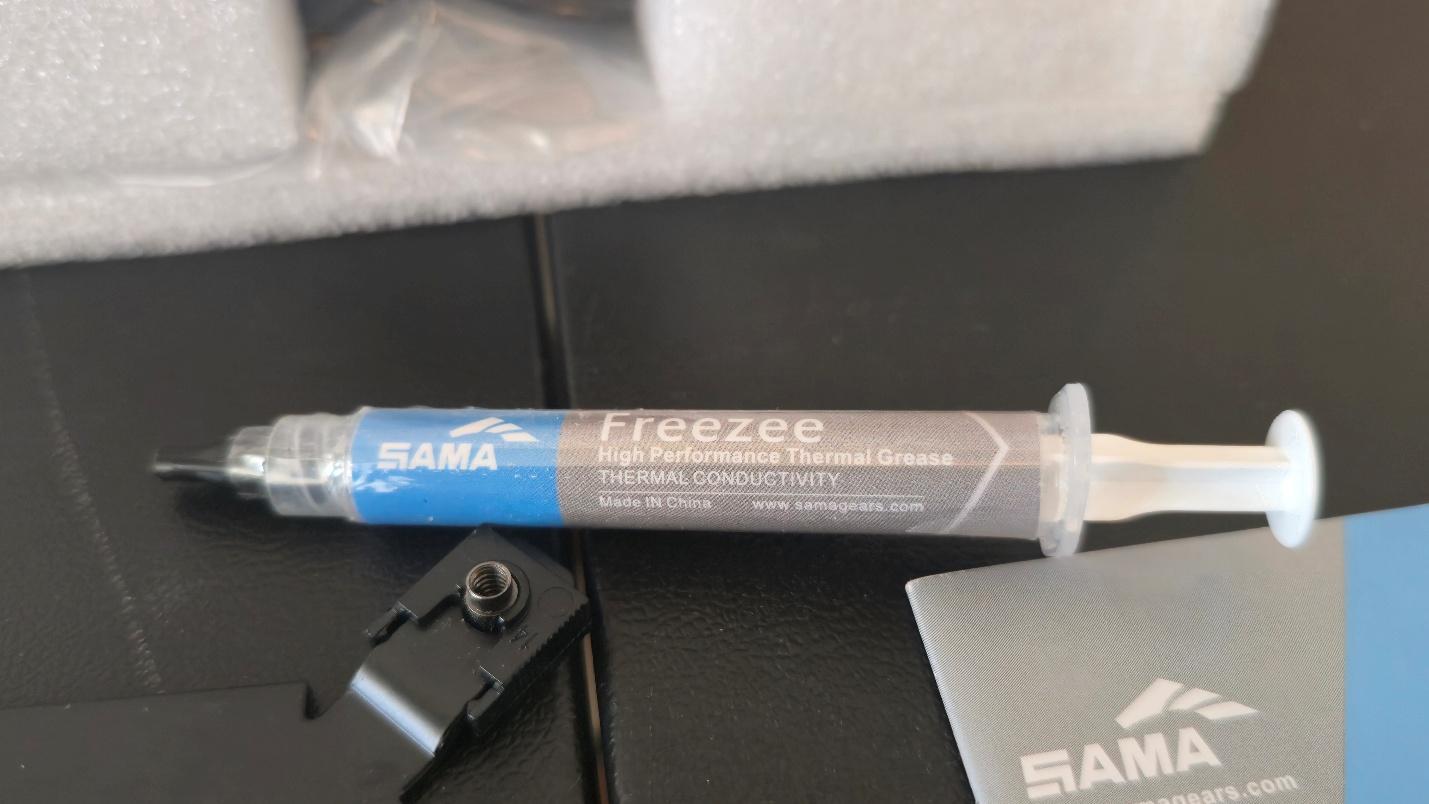
Sama includes its high-performance Freezee thermal paste with the cooler. We’ve put Freezee through two types of tests, and as you’ll see in the benchmarks section, it performs pretty well!
▶ RAM Clearance
Most DDR5 modules shouldn’t have a problem fitting underneath the first fan of SAMA’s A60E. I measured clearance at approximately 42 mm. If you’re using taller DIMMs, you’ll need to adjust the fan up a few MM, or alternatively move it to the rear of the heatsink.
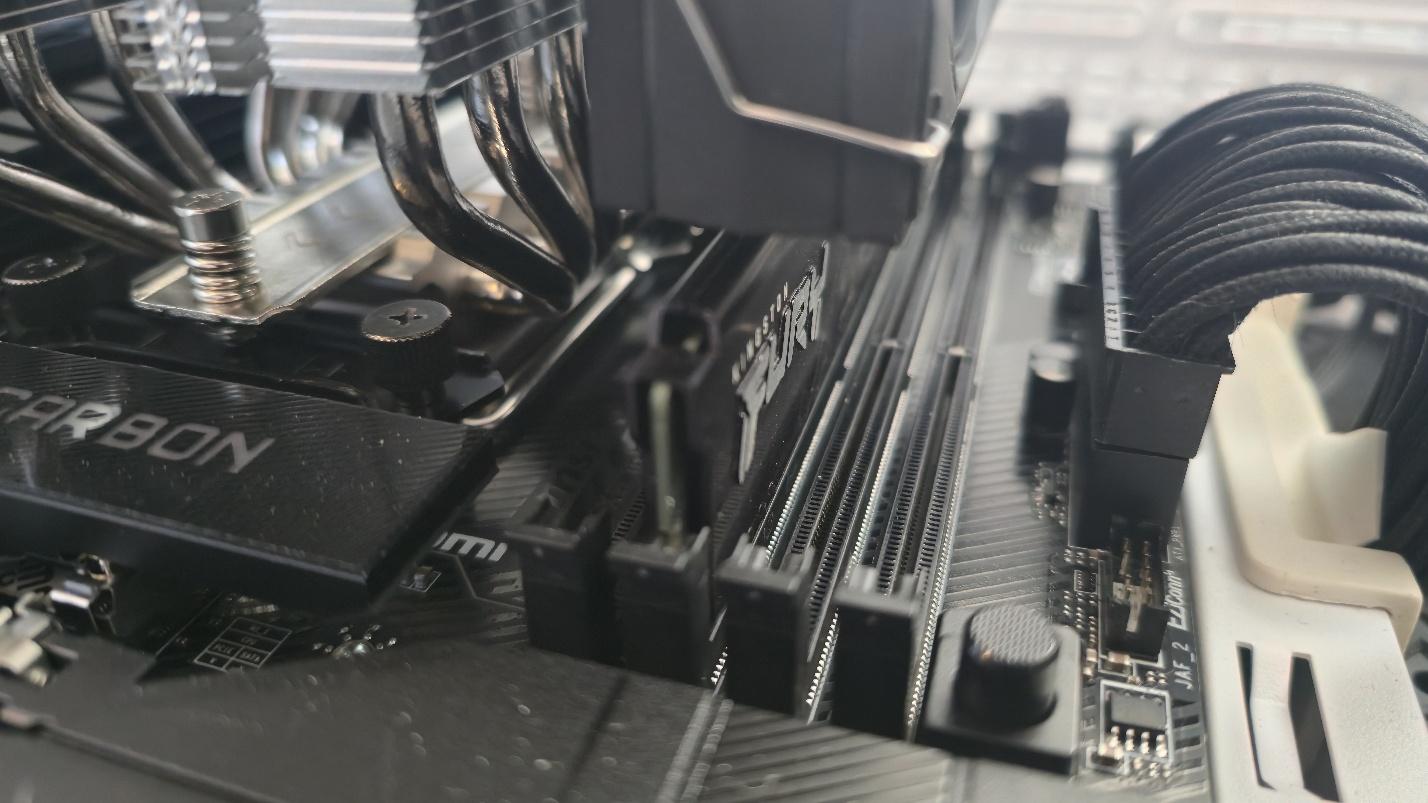
▶ Etched metal adhesive token
Some of y’all like decorative bling, and Sama has you covered with an adhesive etched metal sticker that you can attach to the outside of your PC, your refrigerator, or any other place you’d like to place it. It’s not quite the case badges of yesteryear, but it is arguably more interesting than the paper stickers that still ship with some expensive motherboards.
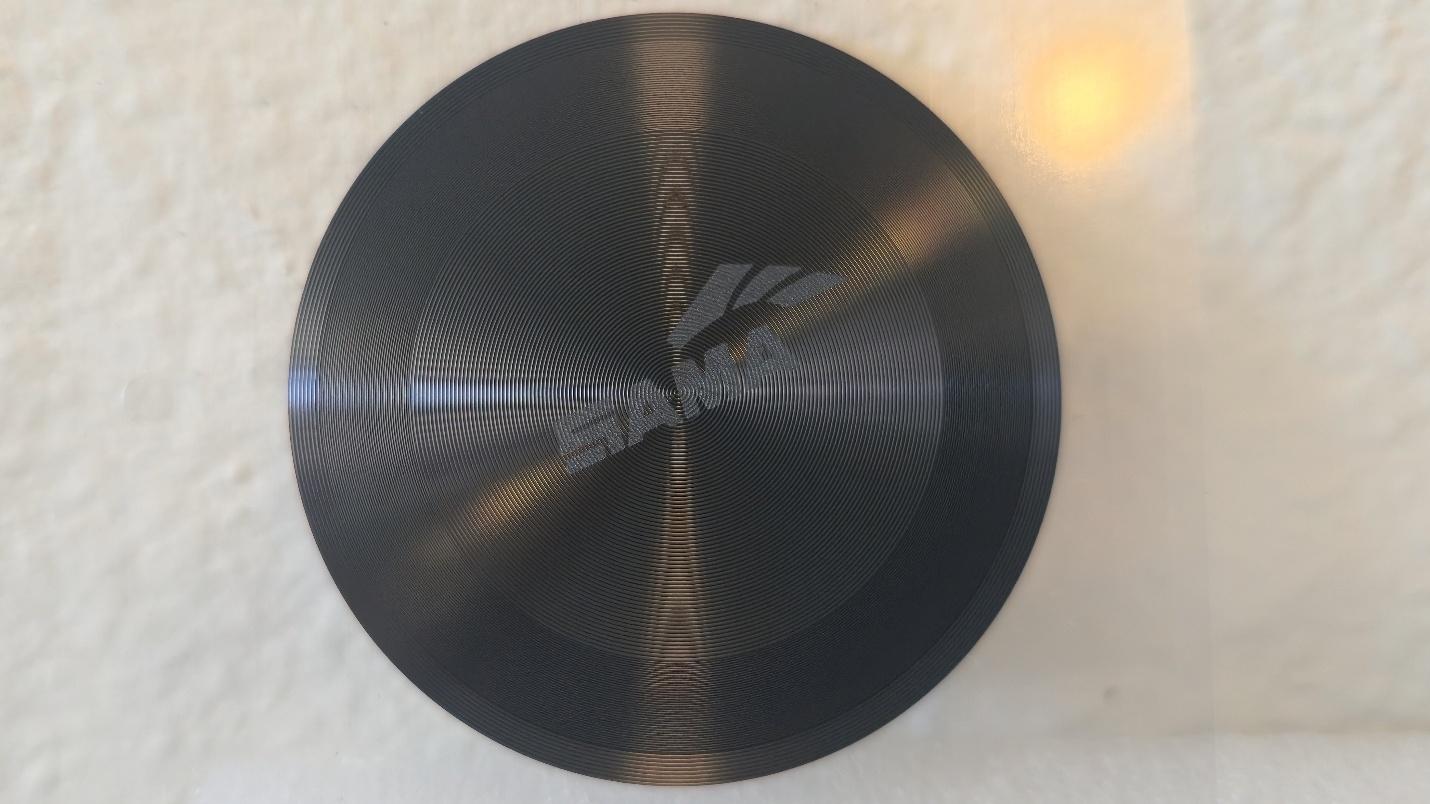
AM5 and 1851 installation
1. You’ll first need to apply the included backplate if you’re using an Intel CPU. AMD users will need to remove the default mounting mechanism.
2. Next, you’ll need to install the standoffs.
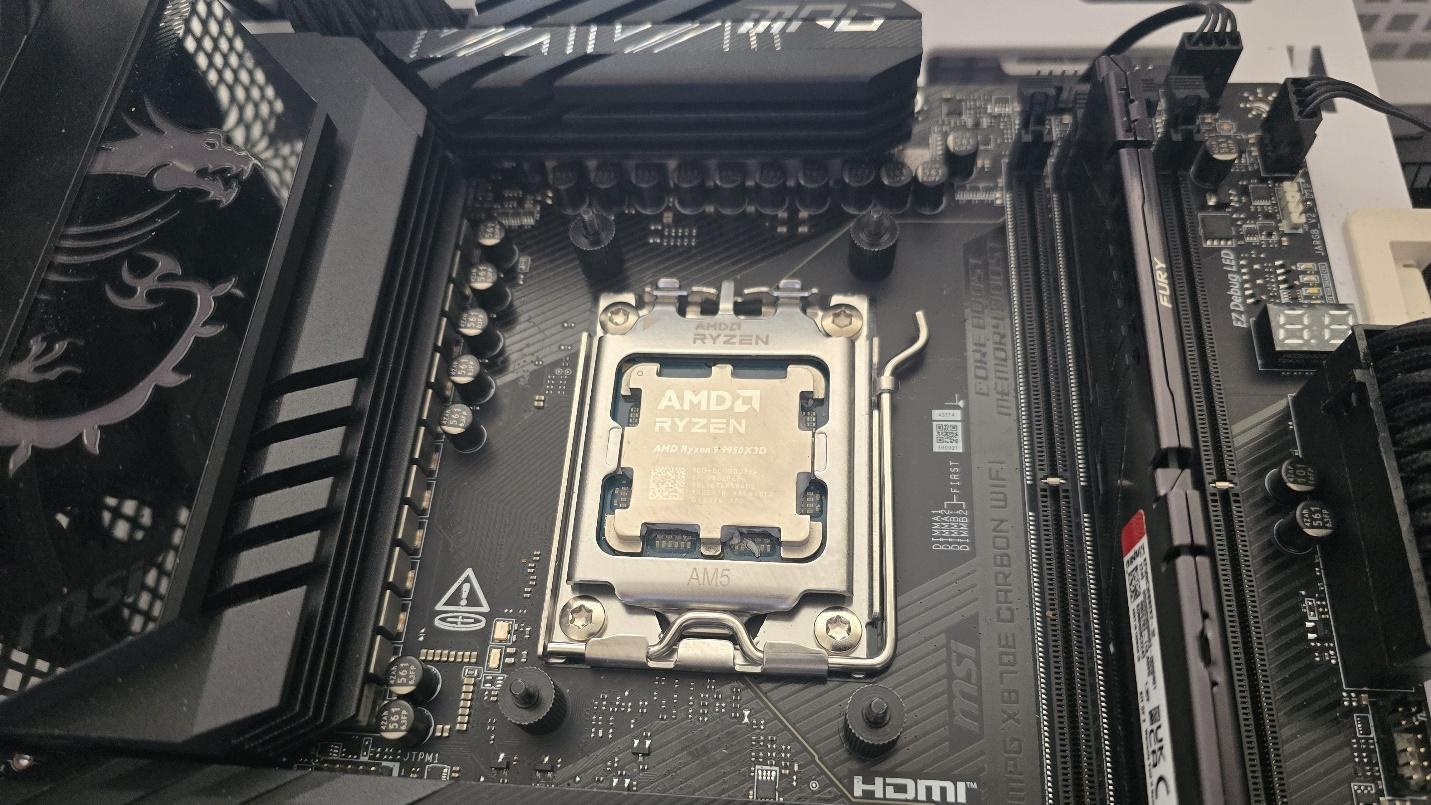
3. Take the mounting bars and apply them to the standoffs, then secure them with the included screws.
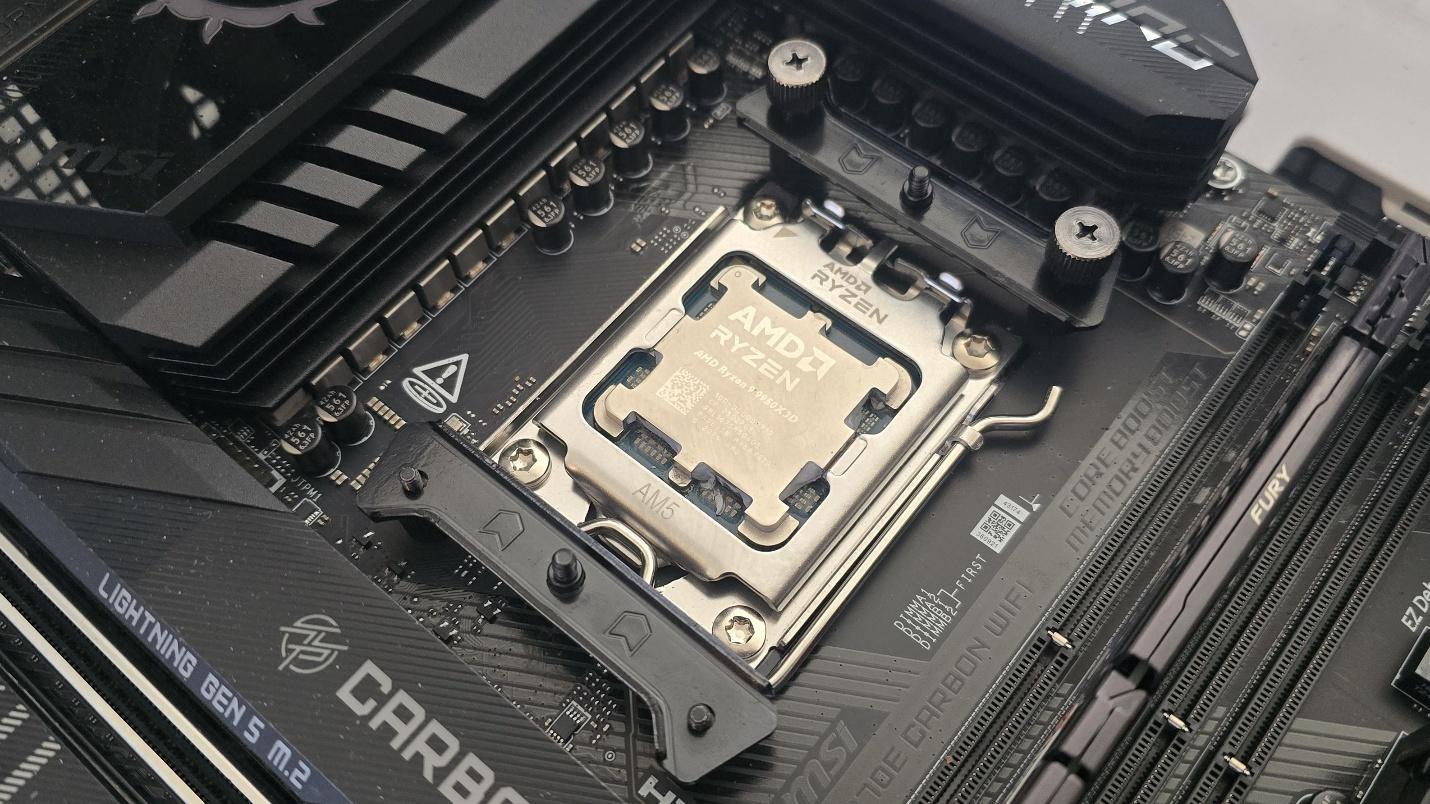
4. Apply the included Freezee thermal paste to your CPU. If you aren’t sure how to do this properly, please refer to our handy guide on how to apply thermal paste.
5. Remove the middle fan from the cooler. Place the heatsink on top of the CPU, and secure it with a screwdriver.
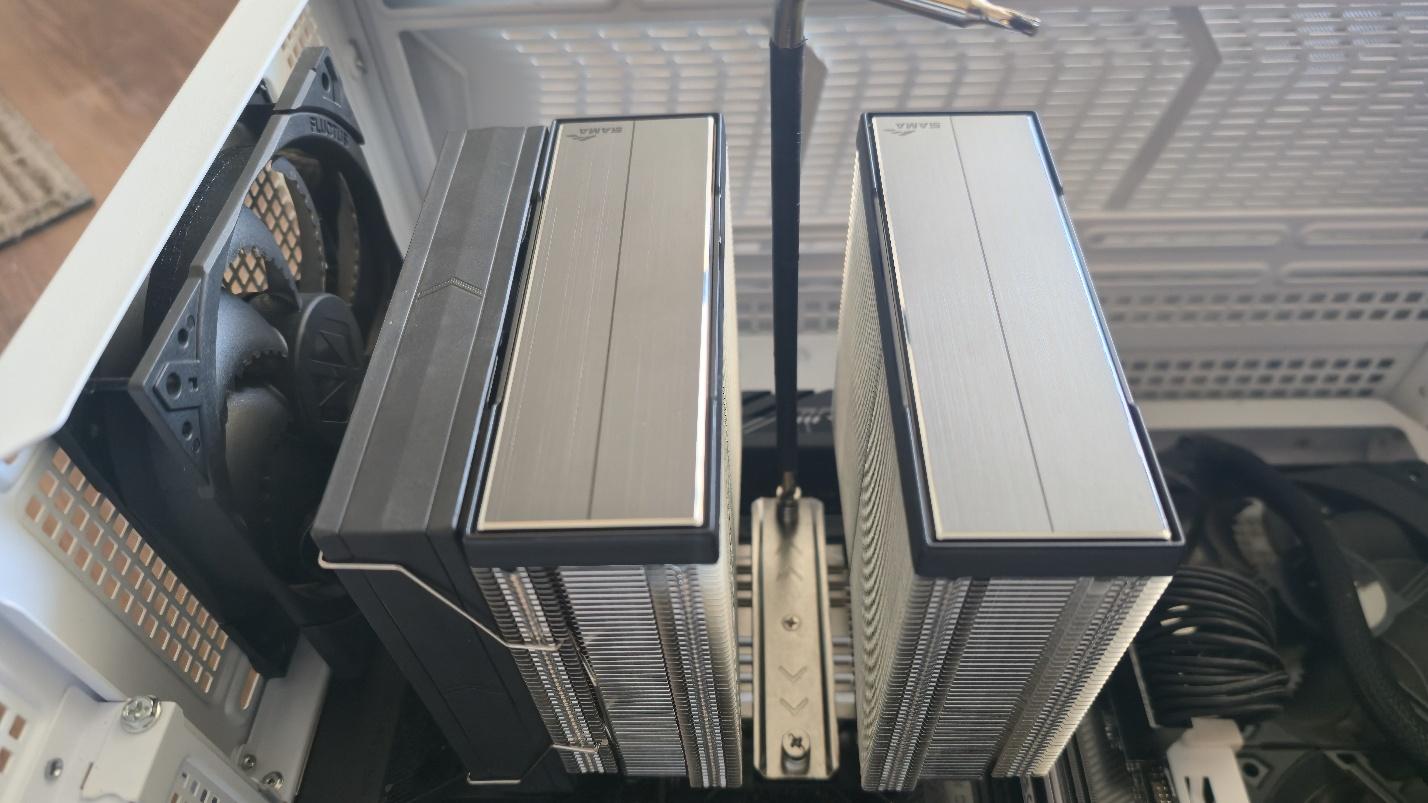
7. Reinsert the middle fan and connect the wires together.
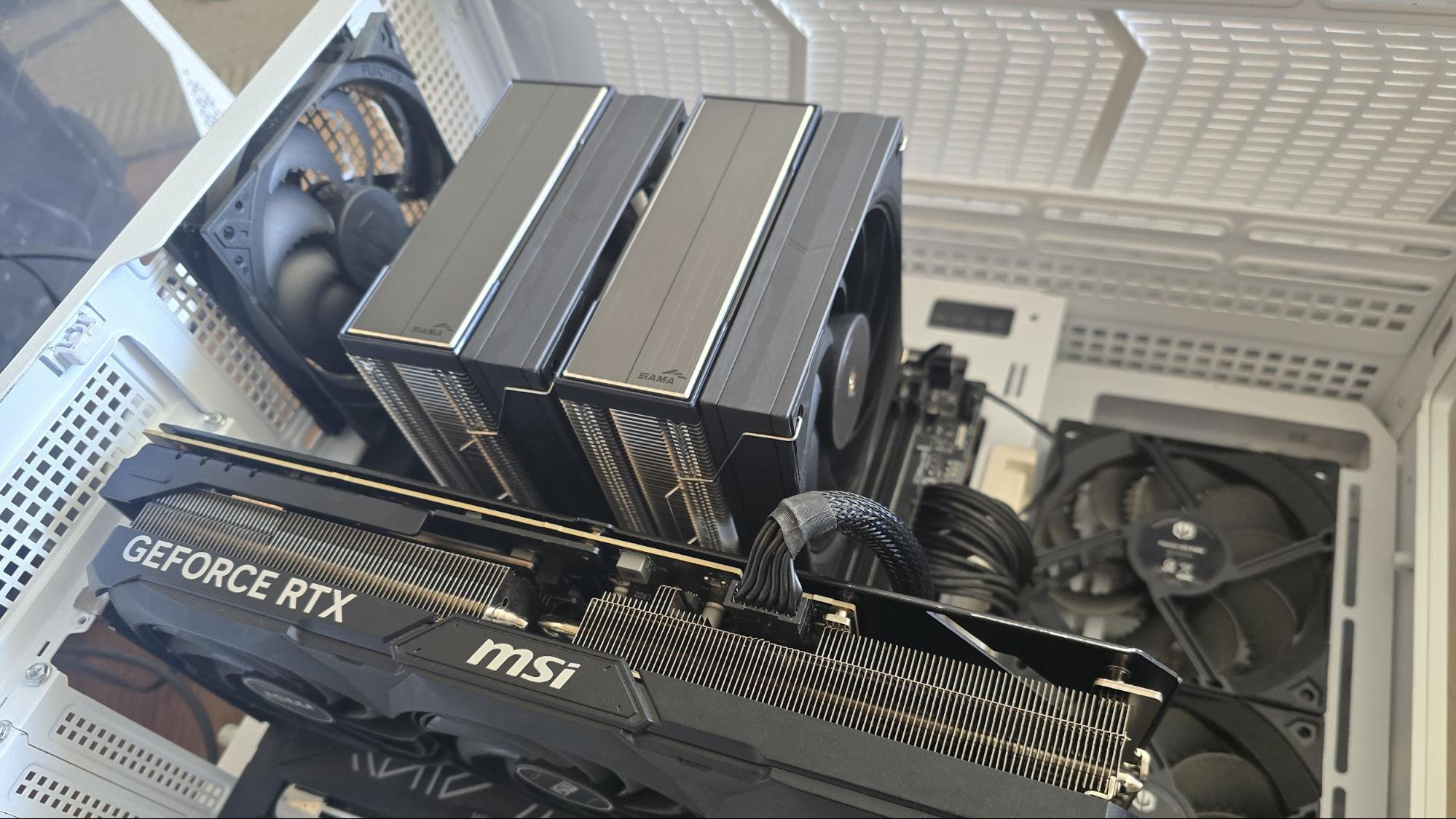
8. Finally, connect the PWM cable to the corresponding motherboard header.
Real-world testing configuration: Intel LGA1700 and AMD AM5 platform
My results may differ from other reviewers because I emphasize results that are comparable to real-world use. This means I test CPU coolers inside of a closed desktop case, which increases cooling difficulty compared to other testing methods.
Many sites test CPU coolers outside of a case, on an open test bench. Open benches have lowered ambient temperatures, which in turn makes weak coolers appear stronger than they really are.
Some publications have used generic thermal plates to test cooling solutions. I reject both of these methods because they don’t accurately reflect the real-world conditions where a CPU cooler is used.
CPU | Intel Core i7-14700K |
GPU | ASRock Steel Legend Radeon 7900 GRE |
Motherboard | MSI Z790 Project Zero |
Case | MSI Pano 100L PZ Black |
System Fans | Iceberg Thermal IceGale Silent |
There are many factors other than the CPU cooler that can influence your cooling performance, including the case you use and the fans installed in it. A system's motherboard can also influence this, especially if it suffers from bending, which results in poor cooler contact with the CPU.
In order to prevent bending from impacting our cooling results, we’ve installed Thermalright’s LGA 1700 contact frame into our testing rig. If your motherboard is affected by bending, your thermal results will be worse than those shown below. Not all motherboards are affected equally by this issue. I tested Raptor Lake CPUs in two motherboards. And while one of them showed significant thermal improvements after installing Thermalright’s LGA1700 contact frame, the other motherboard showed no difference in temperatures whatsoever! Check out our review of the contact frame for more information.
We’ve recently added testing of AMD’s new flagship sixteen-core Ryzen 9 9950X3D. This impressive CPU provides the best gaming and multithreaded performance on the market, and it can prove quite challenging thermally, particularly when PBO is enabled for overclocking.
CPU | AMD Ryzen 9 9950X3D |
GPU | MSI Ventus 3X RTX 4070Ti Super |
Motherboard | MSI X870E Carbon Wifi |
Case | MSI MAG Pano 100R PZ |

Albert Thomas is a contributor for Tom’s Hardware, primarily covering CPU cooling reviews.
-
thestryker It's always good to see new entrants bringing decent performance. Unfortunately I'm not seeing anything that really differentiates this from the competition.Reply
Price is definitely the killer when breaking into this market now. I don't expect anyone to really be able to match the pricing of Thermalright due to their vertical integration, but companies do need to bring something different to the table if it isn't price. The Hyper 612 Apex is an example of exactly that where the cooling is good, but it's also a rather small cooler compared to similar performing air coolers.
